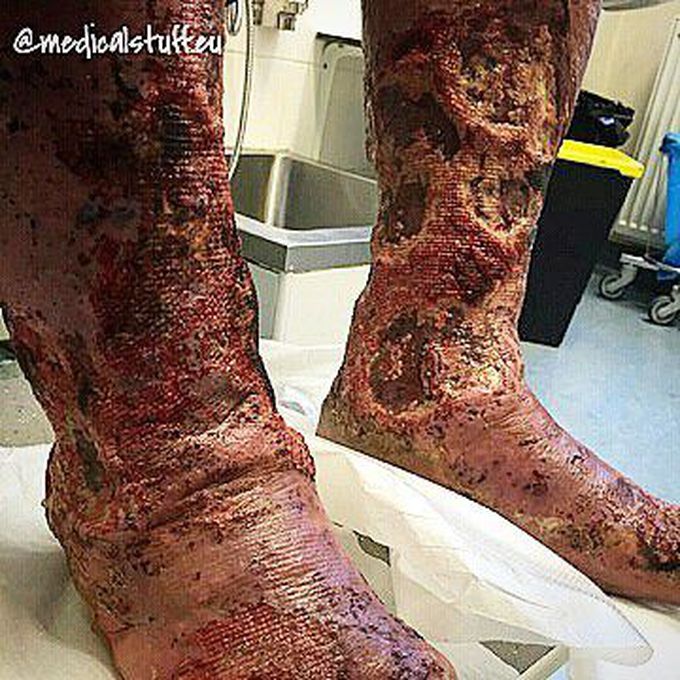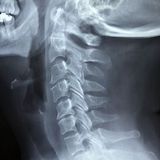


An older lady, suffering from lymphedema, ulcers and leukocytoclastic vasculitis. (The square pattern is from gauze and socks)
Leukocytoclastic vasculitis, also called hypersensitivity vasculitis, describes inflammation of small blood vessels. The term leukocytoclastic refers to the debris of neutrophils (immune cells) within the blood vessel walls. The disease can be confined to the skin (cutaneous) or it can affect many different organs of the body such as the kidneys, central nervous system, heart, gastrointestinal tract, and lungs. In the skin, damaged blood vessels become leaky and small areas of hemorrhage appear as purple-red, raised lesions known as palpable purpura. Multiple discrete or grouped lesions are commonly found on the legs or other dependent areas of the body. These lesions are usually asymptomatic but can be itchy or painful. Large, painful, ulcerated blisters are indicative of more severe vessel inflammation.



